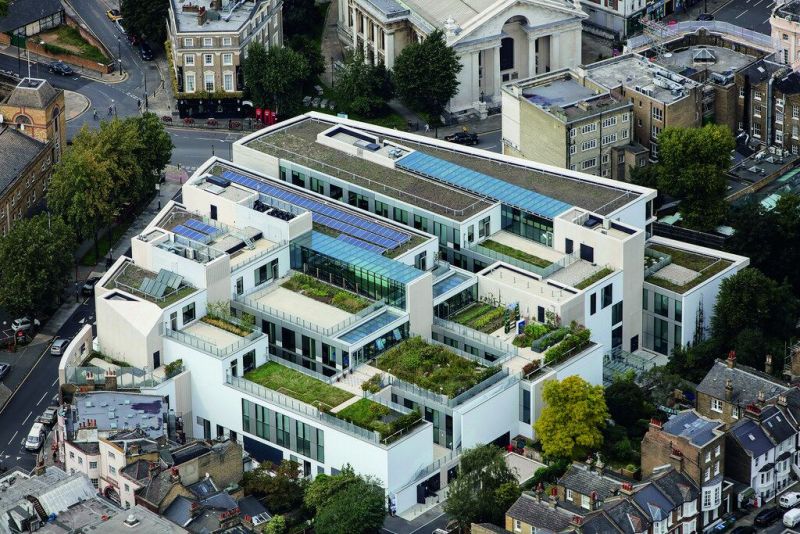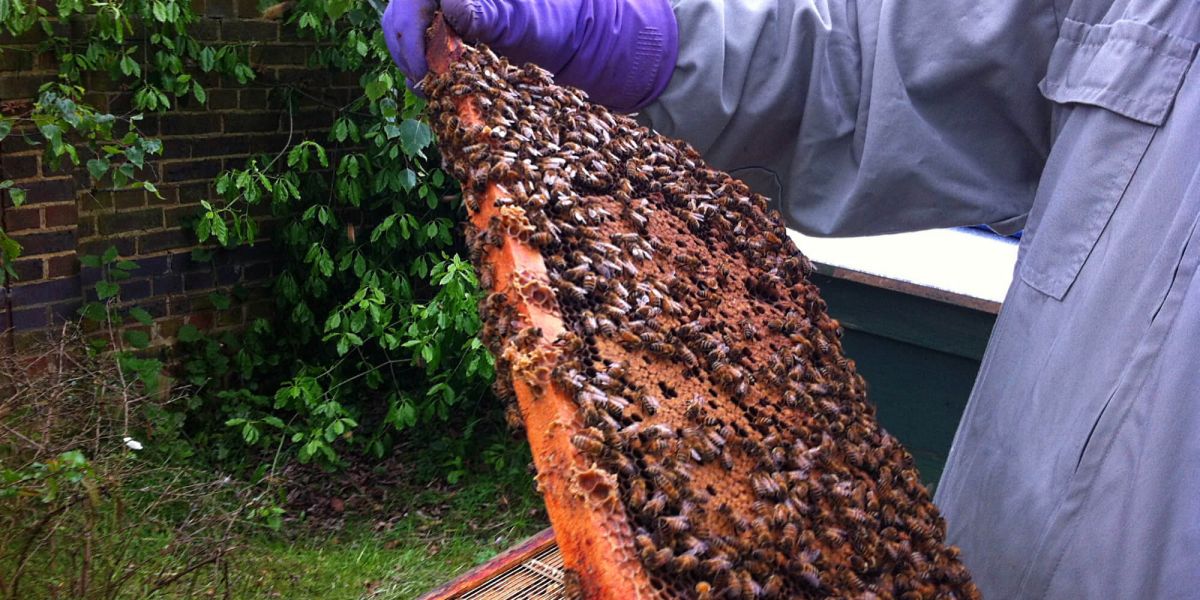Our grounds are managed sensitively; limiting the use of herbicides, protecting habitats and balancing conservation practices to ensure you can enjoy the outdoor areas, so please do explore the areas around you
We have 6.7 hectares (9 football pitches in size) of natural land across our campuses. To date we have recorded over 250 animal species, including around 25 species listed as vulnerable so in extra need of conservation. Our Ecosystems Services Policy sets out our overall vision and aims for how to achieve a balance between natural conservation, education and wellbeing enjoyment.
- Our campuses boast 6.7 hectares of natural land - that's the equivalent of nine football pitches in size - and we've identified that over 250 species are present.
- We're a Hedgehog Friendly Campus (Silver accredited)
- We grow our own vegetables in the Edible Garden at our Avery Hill campus. The produce harvested is available to students and staff, encouraging healthy diets for students on a budget.
6.7 hectares (9 football pitches) of natural land
Our Biodiversity Action Plan (BAP) 2020-2025 outlines how our policy will be transformed into reality. With a wealth of expertise on our doorstep, we aim to lead by example; showing our students and staff how correct management can bring both human and biological improvement. Split into four areas (below), the objectives consider the wider ecosystem services with assessing organisational impact and opportunity.
Habitat & Species
HO1 To maintain & enhance the biological diversity of campus natural land
HO2 To balance the conservation opportunity with amenity needs
Setting up the Greenwich Monitoring Scheme
MO1 To develop a system of monitoring the success
Student, Employee & External Engagement
EO1 To integrate biodiversity into University life (students & staff)
EO2 To maintain areas of natural land for educational purposes
EO3 To provide suitable training to associated grounds & estates staff
Accounting for Biodiversity in Developments
NO1 To integrate biodiversity net gain across our capital projects (including designs to & not already to BREEAM standard)
Protecting our natural landscape and improving the benefits gained is down to an individual and collective effort. We would like to thank all those who have gone an extra mile to ensure our natural landscapes are well managed and looked after.
The plans and strategy are agreed through the university’s Ecosystem Services Steering Group, formed of Academics, Estates and Facilities staff, led by the Sustainability Team. We encourage all staff and students to explore the biodiversity of the estate, and where possible seek to incorporate what can be learned from it within teaching and learning in addition to enjoying the beauty it provides.
Ecosystem Services
Ecosystem Services Are the benefits provided by ecosystems that contribute to human survival and enhance our wellbeing. They can be direct, indirect and can be spilt into four categories (provision, regulation, Supporting and Cultural)
They could help reduce summer solar and heat gain through tree planting, reduce run off and flooding, provide spaces to improve wellbeing and reduce particulate pollution. Financial benefits can be calculated. Natural Capital research on woodlands, in 2015, on behalf of DEFRA concluded that per year; recreational value accounted for £1.7billion, CO2 sequestration for both deciduous and coniferous trees totalled £813million, biomass for timber totalled £174million.
Biodiversity
Biodiversity Refers to all the variety of life that can be found on Earth (plants, animals, fungi and micro-organisms) in addition to the diverse communities that they form and habitats in which they live. The greater diversity of species the higher ecosystem productivity and no matter how small, all organisms have a part to play. Recent declines in biodiversity are largely attributable to man-made causes and being aware of these issues we must all manage these impacts to prevent further loss.
Our Campuses
What will you find whilst exploring? Let us know what wildlife you see and you will be helping us monitor the success of our plans. Will you see the first hedgehog, or the return of newts? Record your sightings here; register, search for your campus under ‘activity’ and submit your sightings.
Avery Hill Campus:
- has the largest green areas, totalling over 13 acres (7 football pitches).
- incorporates a community edible garden, ponds, wildflower meadows and a variety of native planting.
- 37 wildlife species identified, with 7 listed as 'Red' or 'Vulnerable'.
- 2 beehives on site, each managed by a qualified local beekeeper.
- explore the natural environment, follow the Avery Hill Sustainability Trail.
Greenwich Campus
- has the smallest natural habitat, 1.4 acres (under 1 football pitch).
- incorporates the Dreadnought courtyard and 14 landscaped roof gardens of Stockwell Street (previously listed as the largest roof garden complex in Europe) incorporating ponds, grasslands and edible growing spaces.
- 37 wildlife species identified, with 7 listed as 'Red or Vulnerable'.
- 2 beehives on site, each managed by a qualified local beekeeper.
Medway Campus
- has just over 3 acres of natural habitat (over 1 football pitch).
- incorporates the largest area of woodland of the campuses.
- expensive monitoring has occurred, with 222 wildlife species identified and 24 listed as 'Red' or Vulnerable'.
- 1 beehive on site, managed by a local qualified beekeeper.
Help and Support
We all have the power to make a positive difference no matter how small the action

Home Page
Find out how the University of Greenwich applies sustainable development across all of its activities.

Staff
Find out how you can incorporate environmental principles into teaching, and inspire our students.

Students
Find out how you can live and learn sustainably whilst studying at the University of Greenwich

Strategy
Learn more about our strategy, awards, achievements, and accreditations that help make this university a special place.

The Sustainability Team
Learn about the team, their passions and how to make contact.

Get Involved
Find out how you can get involved with sustainability at the University of Greenwich.


